Life of a Bonsai: Taking Advantage of the Different Ways Plants Grow
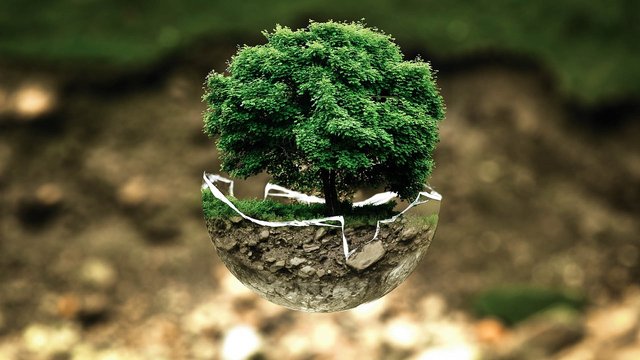
In some of my more recent posts on my bonsais, specifically my posts about my Avocado tree and bonsai, I have had some questions raised on the difference between growing a bonsai and growing a tree. I have been growing both from pips, with the tree planted in a deep pot and the bonsai planted in a shallow tray. This resulted in the tree producing large leaves and the bonsai producing smaller leaves.

Speaking to some of my followers, I have realised how much I would like to share with all of you that the leaves are not the only thing we focus on when differentiating between growing bonsais and trees. Every aspect of the plant where growth takes place is a key focus point for us. And I would like to share this with all of you.
This is by no means a science lesson, and I may use my own terminology instead of the correct scientific ones.
ROOTS

Image Source: Pixabay
In the image above, you can see how a root was left exposed for effect, and the root swelled up just like a branch after exposure to sunlight and air above the soil. The best use of this technique is planting a bonsai's roots over a rock or small stone, or feature, and placing the ends in the soil.
Now, the roots are the lifeblood of any plant. This is the first part that forms when the seed germinates and reaches out for water and food. However, roots of trees and bonsais are taken care of differently. As a tree grows and matures, the roots grow strong, digging deeper into the air to find food, water and other nutrients.
A bonsai has no such luxury. The roots only grow as large as the tray or pot it is in. It may grow so wild that it overruns the soil, leaving no breathing space or space for nutrients. It may crack the pot it is in just to find more soil. This is why bonsai enthusiasts must change the soil every 2 - 3 years. Roots have to be pruned safely and cut back to allow for further growth. If done right, this won't affect the rest of the bonsai, since the roots simply serve as a means of stability (standing up right and firm against gravity and the elements), and to transport food and liquid up to the rest of the plant.
In this way, the bonsai can be kept alive for many, many years to come, even longer than most trees in these modern times. The roots are forever kept young, and fresh soil is supplied with new nutrients. Many bonsais have died in this fashion, though, either from over-pruning of the roots or cutting of the main taproot. So caution must always be taken.
Drainage is also very important when it comes to bonsais. With trees, the water runs through the ground into the earth to the water levels below. The roots use osmosis to suck this water up to them in the soil. With bonsais, you need to keep replenishing the water in the pot. However, there must be an escape for excess water. If water clogs up the soil, it can lead to damp and rot on the roots. Sometimes using a tray is better to allow the bonsai to suck the water up in the same way trees do. But the soil can't be allowed to dry either, as this will affect the permeability of the soil. In other words, how well the soil can allow the water to travel through it.
STEM, TRUNK and BRANCHES
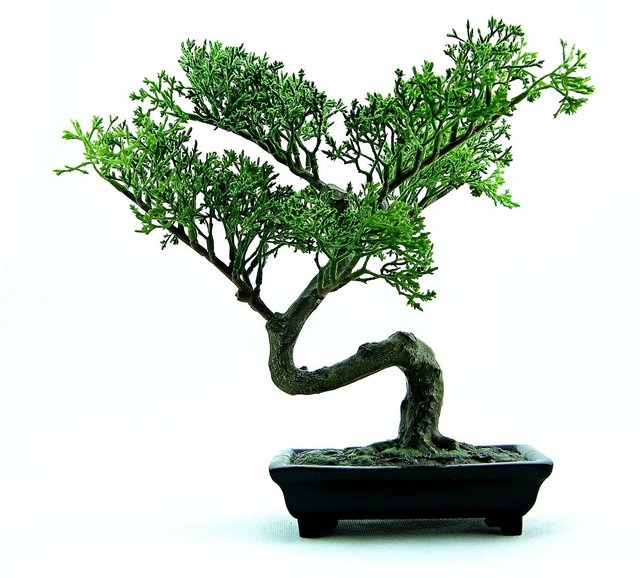
Image Source: Pixabay
The next part to form is the stem. Although the first leaves appear soon after the roots form, it is the stem that reaches up first as the support for the leaves. This stem will become the mighty trunk of the tree in time to come. Now with trees, especially when more than one stem forms, many will prune it down to one main stem, allowing a single support for the branches.
This same practice is done with bonsais too where a single stem is desired. However, in the art of bonsais there are times where twin stems or multiple stems are cultivated for effect. Bonsais are pruned early in their life in order to keep the trunk small in terms of height, and to minimise how many branches are formed.
The trunk and branches are also shaped with the use of wires. The wires are tied to the base of the trunk or branch as wrapped around the length / height of it. In this way, it can be bent and shaped carefully and held in position for a season or two. When the wire is removed, the trunk or branch will remain in that position. This is where the true art of the bonsai comes in. In a future post, I will explain the different positions that the trunk and positions can be grown in.
It must also be kept in mind that trunks and branches grow in diameter and girth every season, swelling quickly in summer and slowly in winter when the bonsai is dormant. This is especially important when planning how you want your bonsai to grow. Wires may choke or bite into the trunk if care is not taken, leaving terrible marks that cannot be repaired.
LEAVES
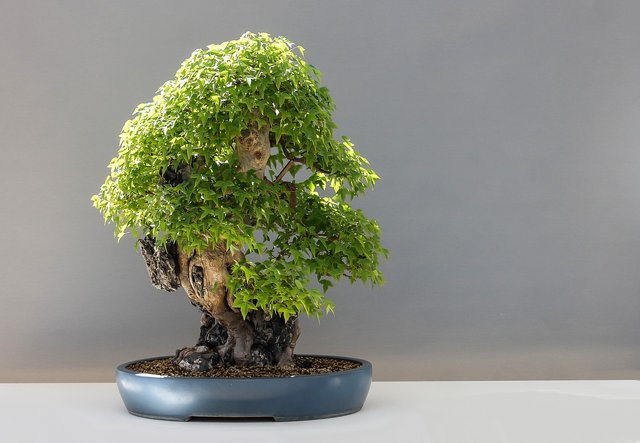
Image Source: Pixabay
Leaves are, to me, the most distinguishable aspect of a tree. They are the aspect that are most used in identifying what a tree or bonsai is. Most bonsais are picked by buyers because of the leaf arrangement, since this is the part that really sets the bonsais apart from one another. In a future article I will look at different types of leaves and how they help us identify trees.
Now trees can survive out in the wild for decades, some centuries. Bonsais, however, require special care because of their tiny nature. Leaves are easily burnt by full sunlight, and if there are not enough water and food then the leaves are the first to suffer. This is why many of us keep our bonsais either indoors or outdoors, making sure there is enough sunlight for photosynthesis to occur, for the sun's light to transform carbon and water into plant nutrients and oxygen.
Leaves must always be studied for signs of malnutrition or bad weathering. Sometimes the leaves will grow too large. To change this, we usually cut the large leaves off. This will cause the plant to produce more, smaller leaves until we obtain the size we desire. Almost like rose bushes that, when producing massive but few roses, we prune in order to give us more, but small, roses.
The positioning of the leaves are also important. One should study images of trees in real life to see how their leaves are arranged. There is an art in the arrangement too. You can have alternating branches as they grow up the trunk, enabling the lower leaves to still receive the sunlight they need. Essentially, the leaf arrangement is important for the next section: flowers.
FLOWERS and FRUIT

Image Source: Pixabay
Just like us humans, plants want to leave their legacy in the world. For them to do this, they need to produce flowers that can be pollinated which then form seeds, and then the cycle starts over again. Now when it comes to trues, the flowers are quite large in some cases, which then produces large fruit or seed pods.
With keeping the leaves and structure of bonsais small, this usually results in smaller flowers and fruit. Care must be taken to remove any massive flowers or fruit, as this is not only unsightly with relation to the proportion of the tree, but can damage the branches and stem of the bonsai. By removing the larger items, the bonsai starts producing more and smaller flowers and fruit, leading to a more desirable outcome.
HELPING WITH THE PROPAGATION
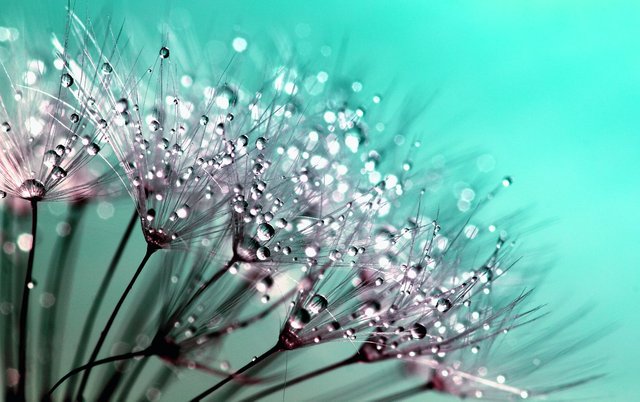
Image Source: Pixabay
Now in nature, life finds a way to propagate and help the trees grow more. Australian Pepper Trees here in South Africa have a penchant for growing more stems from the roots, creating rows of trees that appear separate but as actually from the same tree. All seeds have various requirements for them to sprout, with which the weather (rain), earth (soil on the ground) or animals (digested by bird and then pooped out), help with.
For bonsai enthusiasts like myself, we like to help with the propagation effect. When it comes to seeds, I usually research what way is best to help them grow. Having them half subverted in water (avocado), placed in the fridge in moist paper towel to simulate winter (peaches), or placed on the window sill in a paper towel for sunlight and water (oranges). There are so many different ways in which germination can be reached.
Another method of propagating new growth is by off-cuts. This is if you want to skip the whole germination stage and cut right to the chase, so to speak. You can cut off a small branch at the base, use some root grow formula (optional) to encourage chemicals to help the roots grow, and put the end in water or soil or some other recommended medium. When the roots have grown sufficiently to stabalise the bonsai and new leaves start to form, you know you have succeeded.
There are other methods of propagating growth, but one final method worth mentioning is grafting. This is when you cut off a branch or piece of a tree, graft or cut out a hole or slit in a bonsai and place the new piece in the bonsai. The new piece will then latch onto the bonsai's feeding system and share the nutrients with it until it is strong enough to look after itself.
CONCLUSION
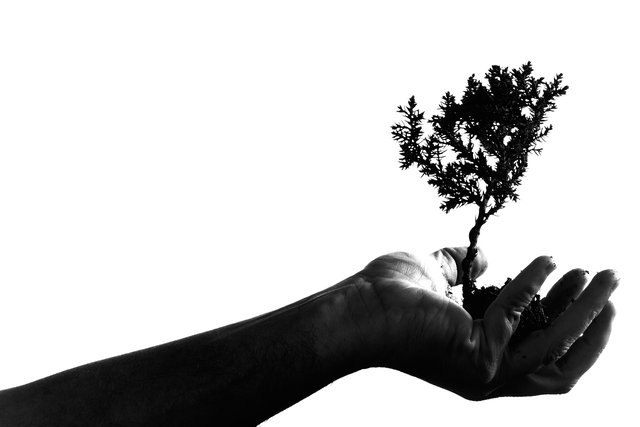
Image Source: Pixabay
The Art of Bonsai is a fine art. I haven't even mentioned the difference between the Japanese and Chinese styles. It is man's effort to turn the beauty of mother nature into an artform. For me, it's all about nurturing life and watching the beauty of life unfold before my eyes. You really can't understand the joy of raising these wonders until you take care of one yourself. And it isn't just about watering every now and again to make sure it's still alive. It's about spending time with them everyday to make sure they are happy. And that makes me happy.
Header Image: Pixabay
Please support my work by subscribing for FREE to one of the following:
@shadowolfdg is a  SteemPunk and Steemit article Mentor for @schoolofminnows
SteemPunk and Steemit article Mentor for @schoolofminnows
Member of @teamsouthafrica
Post of the Day Award - @adsactly
Official Promoter for @tpot -- join our discord channel
Kind regards
Shaun M Jooste
Joint-Owner: AIR Entertainment (https://airentertainment.biz)
Director: Celenic Earth Publications (https://celenicearthpublications.wordpress.com)
Author, Screenwriter, Gamewriter, Journalist (https://celenicearth.wordpress.com)




Interesting learning about the bonsai growth, never tried this thanks @shadowolfdg